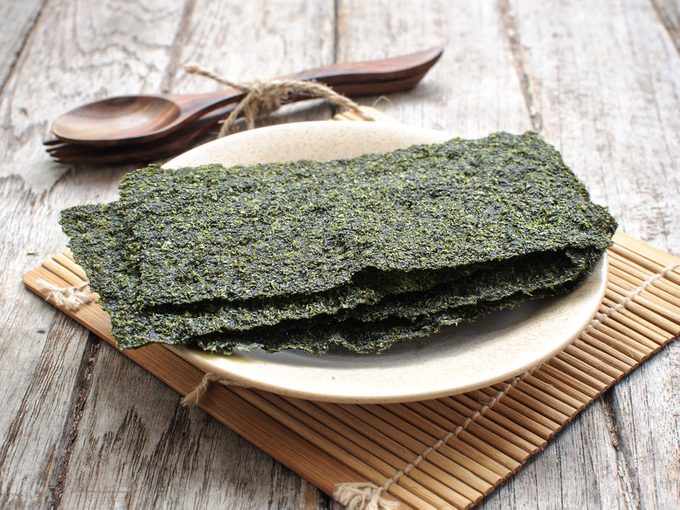Nutrition Tips: The Health Benefits of Eating Seaweed
Packed full of vitamins, minerals and other nutrients, seaweeds are now commonly used in various cuisines and lead to overall better health and nutrition

Source: The Amazing Healing Powers of Nature, Reader’s Digest
Health food can taste good; learn how seaweed boosts nutrition
Packed full of vitamins, minerals and other nutrients, seaweeds are now commonly used in various cuisines. Japan has brought us miso soup, which often contains brown seaweed; Chinese cooking is known for dishes such as crispy fried seaweed; and, increasingly, even European and American diets are incorporating these and other types of seaweed.
Positive reports on the nutritional and other health benefits of seaweeds have led to a wide range of seaweed supplements becoming available. But there are other, more creative ways to get your seaweed fix.
Ways to eat seaweed
If you don’t fancy seaweed soup or fried seaweed, you could always try a seaweed salad, which will provide healthy doses of iodine, vitamin K and magnesium. Or perhaps some seaweed bread? According to one study, as well as being nutritious, seaweed bread may help people lose weight.
Seaweed can also be used as a salt substitute; you can buy seaweed granules online and from some health food stores for this purpose. Seaweed granules are considered healthier than salt because their sodium level is just 3.5 percent compared with approximately 40 percent in the salt that is commonly used by the food industry.
Modern research and studies on seaweed
A study at Sheffield Hallam University in England found that, by fortifying bread with seaweed (Ascophyllum nodosum), the fibre content was enhanced, with the result that those eating it felt fuller more quickly than they did with standard bread. In a trial, overweight men ate the seaweed bread for breakfast, toasted and topped with scrambled eggs. Compared to men who had the same breakfast served on whole grain bread, participants said they felt less hungry and subsequently ate less at lunch and dinner that day.
In another study at Sheffield Hallam University, seaweed granules made from Arctic wrack seaweed, found in the North Sea, were used as a substitute for salt in baked goods, and tests showed that consumers could not detect any difference in taste.
Seaweed is also good for your skin
Seaweed is not only good for its nutritional value, it can also help improve your skin. Try a seaweed wrap, which is the process of coating your skin with seaweed paste. With some such treatments, the entire body is covered with the paste, encased in cling film and left to sweat out impurities for an hour. By all accounts, this leaves your skin firmer and smoother’although the smell of seaweed has a tendency to linger!
The iodine-rich seaweed wrap is thought to stimulate the body’s metabolism. Nutrients from the algae are absorbed into the skin and toxins are eliminated. The process of washing off the wrap removes dead skin cells and draws any remaining toxins to the surface. The heat generated by the wrap is claimed to redistribute fat deposits, which may account for the smoother appearance of the skin and reduced cellulite.
Another way to use seaweed as part of your skin care regiment is as a face mask, which are said to smooth, tone and moisturize the skin. Buy some dried sheets of wakame or nori (available from health food stores). Grind the sheets into a powder. Mix 1 tablespoon (15 mL) of powder with 1 tablespoon (15 mL) of warm water to make a paste. Add either 1 teaspoon (15 mL) of aloe vera gel or 1 teaspoon (5 mL) of honey, or both. Smoothe the paste across your face, leave for 20 minutes, then rinse off. For best results, use twice a week. Ready-made masks are also available.




